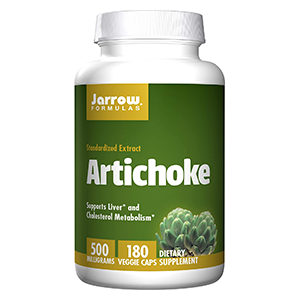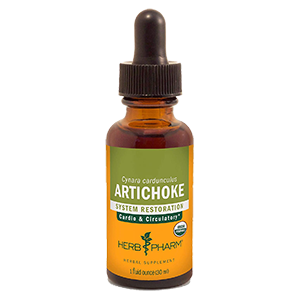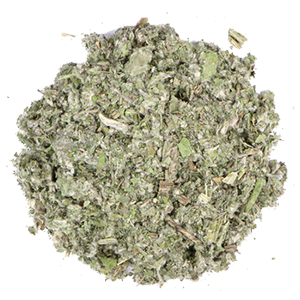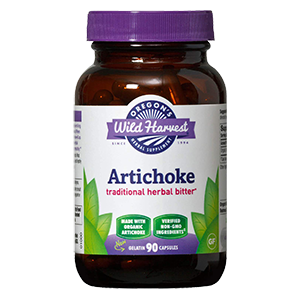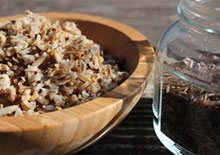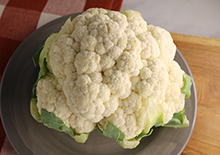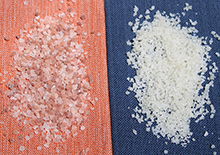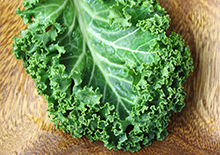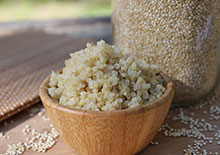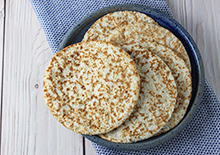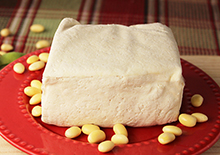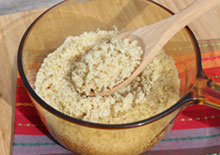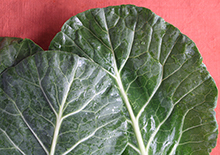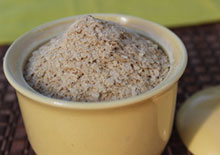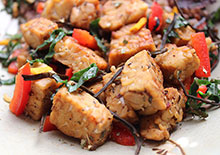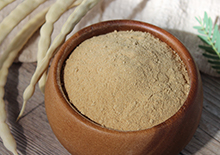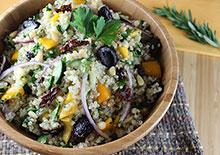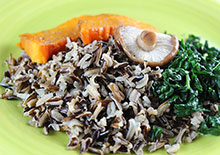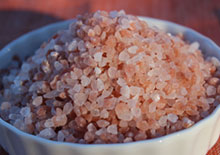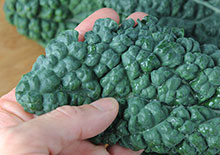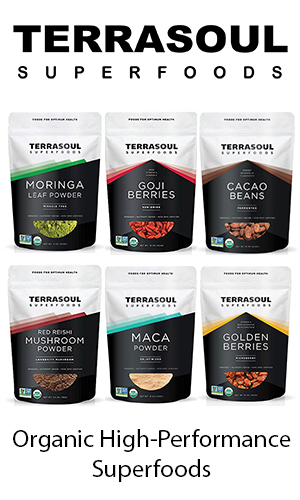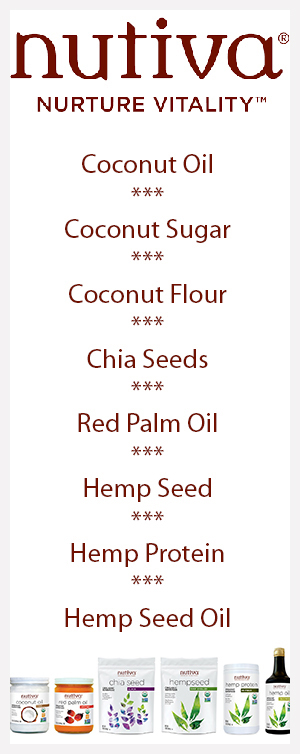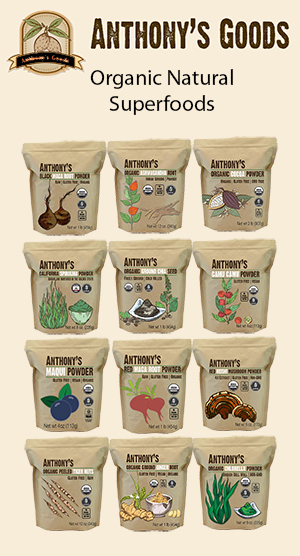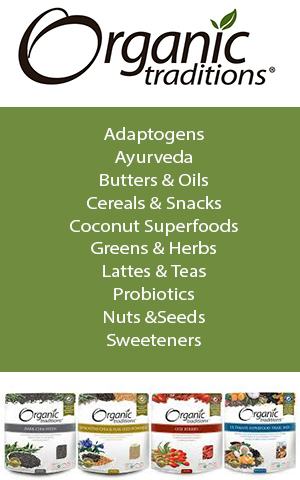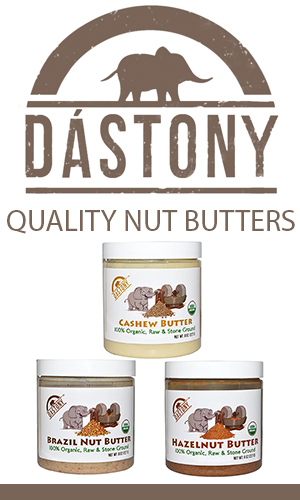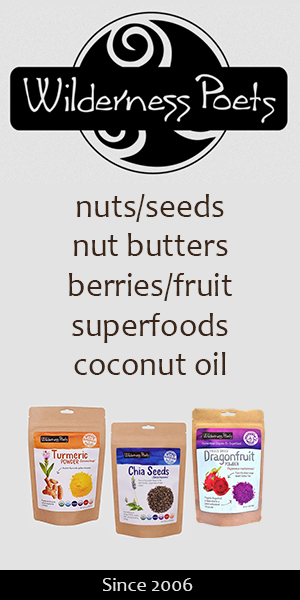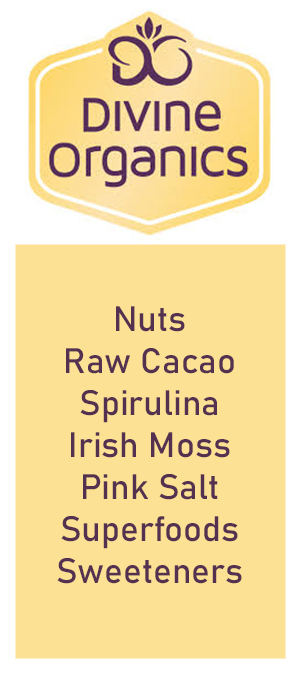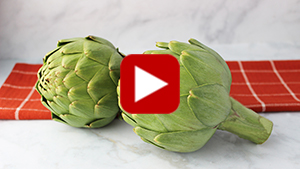- Home
- Plant-Based Cooking
- Globe Artichokes
Globe Artichokes: Facts, Nutrition, and Preparation
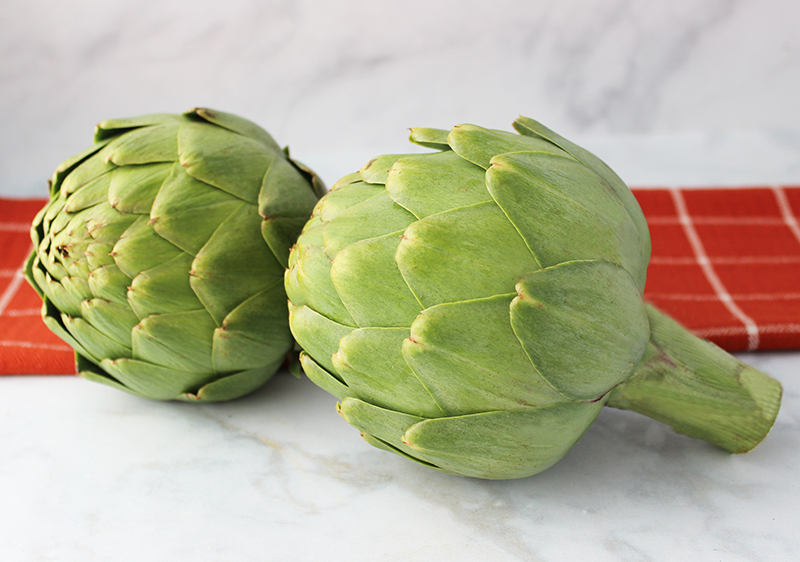
Globe artichokes are one of those foods that undoubtedly stand out from other common vegetables at the produce market. Their tough thorny layered leaves and thick stems can at first glance be somewhat intimidating.
However, what awaits after fully cooked are tender petals and a center heart that is considered a rich-tasting appetizer or side dish in many cultures around the globe.
Most people describe them to have a soft meaty texture with an asparagus-like flavor and nutty sweet taste and aftertaste.
The wild variety of artichoke called the cardoon (Cynara cardunculus), is native to the Mediterranean where it was consumed and later cultivated by many countries in this region. Enjoyed as a delicacy by ancient Greeks and Romans, the name cardoon comes from its Roman name "carduus" which in Latin means "thistle-like plant."
Early cultivation of the cardoon is thought to have originated in Sicily with further development of the larger "globe artichoke" occurring predominantly in Spain and Tunisia, a country in North Africa. This is the main crop species domesticated as a food source, now with many variations or cultivars.
Today, almost all artichokes grown in the U.S. come from California, primarily in coastal regions of Monterey County like Castroville nicknamed the "Artichoke Center of the World." In other Mediterranean climates, Italy, Spain, and Egypt are the main producers supplying the world market.
Although artichokes are commonly available year-round, typically the peak season is March through May with usually a second crop harvest in the fall.
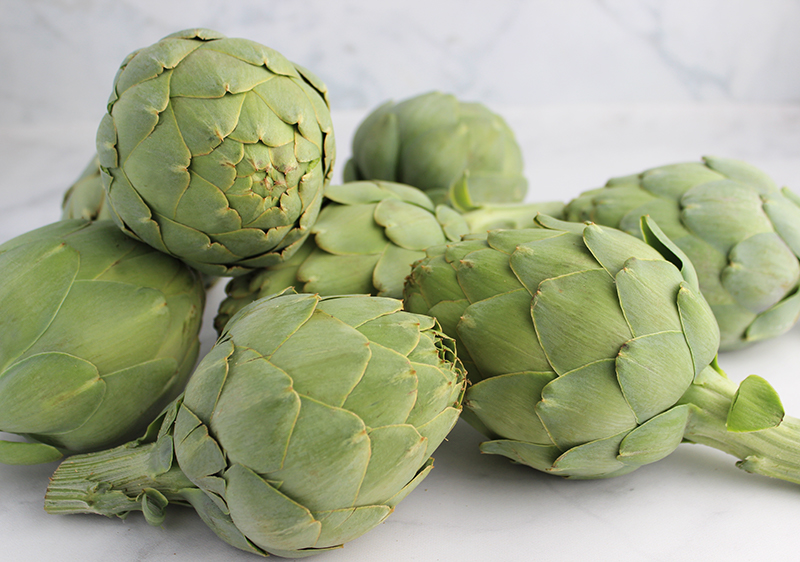
What are Globe Artichokes?
Globe artichokes are cultivars of the cardoon and a type of perennial thistle as evidenced by their purple-colored flower heads with thorny bracts or leaves at the base. Also related to the family of dandelions, daisies, and sunflowers, the blossoms look similar to other plants in the thistle family, like the popular milk thistle variety.
Interestingly, the artichoke itself is actually the leaf-covered flower bud before it starts to bloom. When allowed to flower, the blossoms are about seven inches in diameter. After this stage, the artichoke is no longer an edible food source.
Most would agree, that the worst parts of an artichoke are the thorns at the end of the leaves and the circle of tiny hairs that cover the heart center, called the "choke". The hairs if consumed can cause a form of choking, hence the term. When left to mature, the choke hairs are what develop into the individual purple florets during the blooming stage.
All cultivated artichokes come from the main globe artichoke species (Cynara scolymus), a variation of the wild cardoon. There are close to 40 varieties that are grown commercially.
Popular cultivars include the Green Globe, Big Heart, Omaha, Mercury, Siena, Chianti, and King. Some types have a purple coloration.
There are also baby artichokes harvested lower down on the plant or when young. These types have soft leaves and can be eaten whole when cooked as they don't have thorns or hairs.
Artichokes produced on a mass scale are grown as either perennials or annuals. Traditional artichoke field production is maintained as a perennial for 5 to 10 years by cutting back or "stumping" the plants yearly to activate new shoot development. Artichokes are likewise crop planted commercially as annuals straight from seeds and transplanted into fields after the seedlings develop. (Source)
Each individual plant has very large leaves that can grow to be six feet in diameter and three to four feet tall, producing close to 20-50 artichokes or more throughout the year depending on the variety and how they are cared for.
How to Eat Artichokes
Different than most vegetables, artichokes need to be properly prepared to make them an edible and enjoyable eating experience. This is frequently achieved by steaming them for about 40 minutes to one hour.
While the leaves have tender ends that are edible when cooked the remaining portion is not palatable and too tough for proper digestion.
The traditional approach to eating an artichoke is to remove the petals one at a time and pull off the soft flesh at the bottom with your teeth. The rest of the leaf is discarded. In the U.S., they are usually served with some kind of dipping sauce, commonly salted olive oil, melted butter, aioli or mayonnaise.
Eventually, after the outer leaves are peeled off, you will get to the circle of inedible tiny hairs. These are removed to reveal the most prized part of the vegetable, the thick and meaty heart. The lower peeled stems are also edible and quite tasty.
Artichoke hearts are frequently marinated and widely available as a commercial product to be enjoyed as a salad topping or prepared as a dip. Artichoke hearts sold commercially are typically not just the heart but are the quartered inner section of baby artichokes with tender leaves attached.
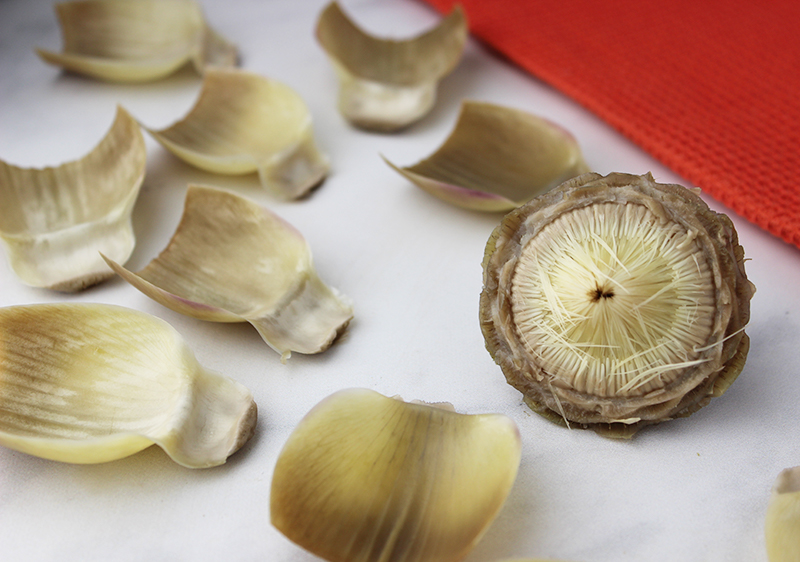
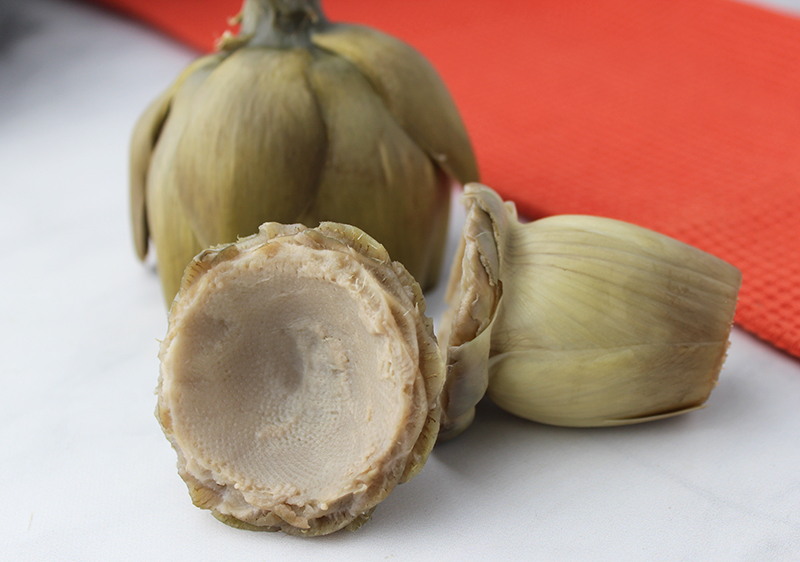
Artichoke Nutrition Benefits
Historically, in ancient Greek and Roman folklore artichokes were considered a type of aphrodisiac, although there is no scientific data to back up this claim.
What are the benefits of artichokes from a nutritional perspective?
Cooked globe artichokes are a low-carb vegetable making them suitable for those on ketogenic diets or weight loss protocols. When it comes to eating artichoke leaves and hearts, often it depends on what condiments you eat with them as they are usually, as mentioned, served with a high-fat dipping sauce. This can add calories if you happen to be counting them.
One medium-sized boiled artichoke (120 grams) about 64 calories, is low in fat and contains 14 grams of carbohydrates. However, 10 grams of these carbohydrates are in the form of fiber content which provides about 40% of the Daily Value for dietary fiber based on a 2,000-calorie adult diet.
For a vegetable, they also contain a good amount of protein and are high in certain vitamins and minerals especially folate, vitamin K, vitamin C, magnesium, manganese, and potassium.
One Medium-sized Boiled Artichoke (120 grams)
Calories - 63.6
Carbs - 14.3 grams, 5%
Protein - 3.5 grams, 7%
Fat - 0.4 grams, 0.60%
Fiber - 10.3 grams, 41%
Folate - 107 mcg, 27%
Vitamin K - 17.8 mcg, 22%
Vitamin C - 8.9 mg, 15%
Magnesium - 50.4 mg, 13%
Manganese - 0.3 mg, 13%
Potassium - 87.6 mg, 10%
Phosphorus 87.6 mg, 9%
Copper - 0.2 mg, 8%
Niacin - 1.3 mg, 7%
Riboflavin - 0.1 mg, 6%
Vitamin B6 - 0.1 mg, 5%
Thiamine - 0.1 mg, 4%
Iron - 0.7 mg, 4%
Pantothenic acid - 0.3 mg, 3%
Calcium - 25.2 mg, 3%
Zinc - 0.5 mg, 3%
(Percent Daily Value based on a 2,000-calorie adult diet)
Globe artichokes, like Jerusalem artichokes (an unrelated species) and chicory, are some of the highest sources of the soluble fiber known as INULIN. Inulin is a type of polysaccharide that can have a positive prebiotic influence on healthy gut microbiota.
Keep in mind, that artichokes might not be a good vegetable for all individuals as some people can have adverse digestive reactions such as bloating and intestinal gas several hours after consuming them, especially when combined with other foods. This is thought to be due to their inulin content.
About Globe Artichokes and Their Antioxidants
One might not at first suspect the artichoke to contain much else as far as it’s nutritional composition, but they actually rank high in ANTIOXIDANT content over many common vegetables. (*)
However, one aspect we discovered is that most of the research identifying antioxidant levels is based on artichoke leaf extracts rather than the cooked vegetable itself.
For example, in a 2019 published study, extract supplementation was shown in animals to increase certain key antioxidants in the liver organ.
The entire leaf is, in fact, a potent source of many antioxidant compounds, like cynarin, silymarin, luteolin, chlorogenic acid, and other various polyphenols. Silymarin, also found in milk thistle seeds, is likewise noted for its beneficial influence on the liver.
Because when consuming cooked artichokes, only a smaller portion of the leaf is edible, they probably don't offer a super-condensed amount of these nutrients.
This is one of the reasons why artichoke leaf extracts are sold as a dietary supplement, to concentrate these antioxidative constituents. Leaf extracts are additionally considered a type of natural "cholagogue" because they can stimulate the production of bile. These supplements are additionally top on the dietary list of cholesterol balancing helpers.
This also goes along with the use of dried artichoke leaves as a traditional therapeutic ingredient in herbal bitter formulas or in tea infusions.
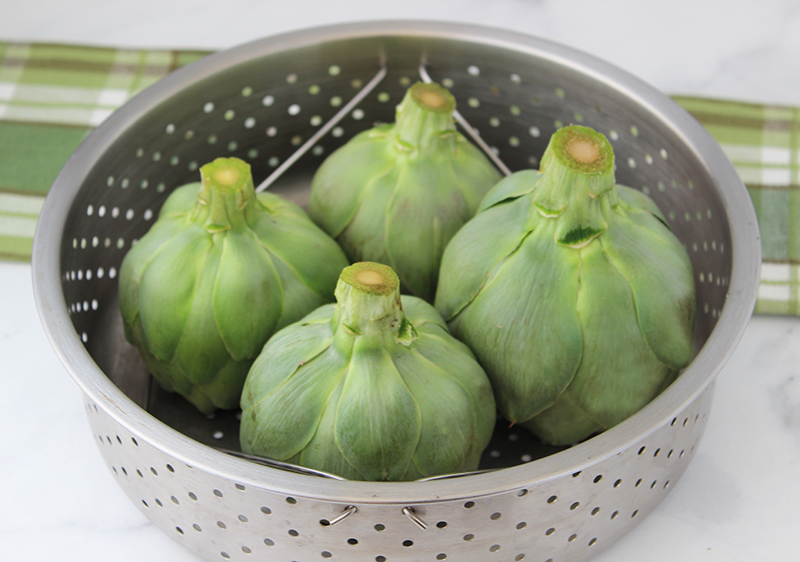
How to Cook Artichokes
While the artichoke vegetable might initially look a bit intimating to the artichoke newbie, they are relatively easy to prepare.
There are many ways to prepare globe artichokes before cooking them depending on the country you come from. In California, most home cooks leave the petals on the vegetable after trimming off the smaller outer leaves.
The stems are cut leaving about an inch or so. Some also prefer to cut about ½ to 1 inch off the artichoke tops as well as trim the thorns off the outer leaves with kitchen scissors.
Popular cooking methods include steaming, boiling, baking or using crockpot methods.
The basic steaming technique is the one we personally utilize using a large pot with a steamer basket. One layer of artichokes can be placed face up or face down and steamed for 40 minutes to an hour depending on their size.
When done, the stem should be soft when poked with a knife and the leaves should be tender and fall off easily.
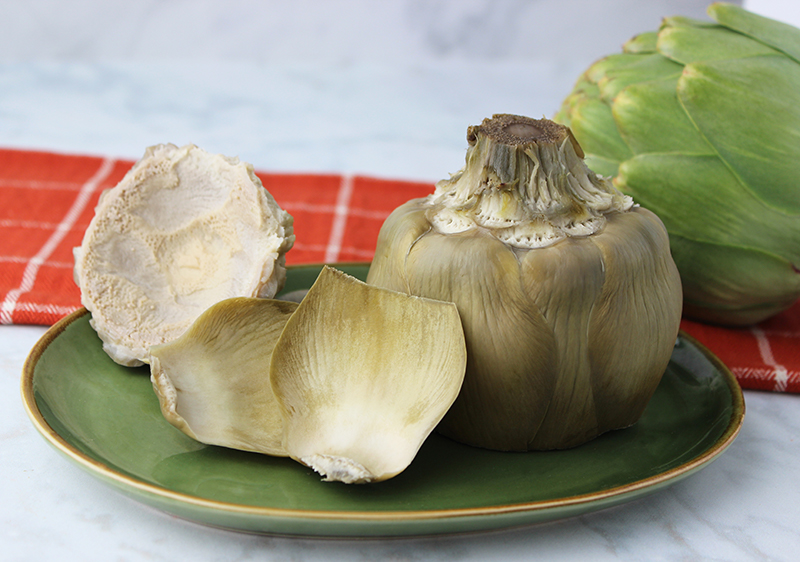
How to Use
As mentioned, globe artichokes are typically consumed cooked using a variety of different methods including steaming, boiling, baking, and grilling.
There are many diverse culture-specific ways to prepare artichokes and use them in recipes. Here in the U.S., the most popular way is as a side dish served with a dipping sauce, like olive oil, melted butter or mayonnaise.
When selecting an artichoke, look for firmness and a heavy quality. The petals should be closed not open and the leaves fresh and green not dried out.
Artichoke hearts are also frequently available marinated, canned, and frozen in many markets worldwide.
Precautions:
Some individuals may experience allergic reactions after consuming cooked globe artichoke with symptoms that include bloating and intestinal gas. Consult your nutritionist or physician before adding artichokes to the diet if you are pregnant, nursing, or taking any prescribed or over-the-counter medications.
Shop Related Products (About Affiliates & Amazon Associate Paid Links)
Affiliate Disclaimer: This section contains affiliate product links. If you make a purchase through our recommended links, we receive a small commission at no additional cost to you. Thanks for the support.
